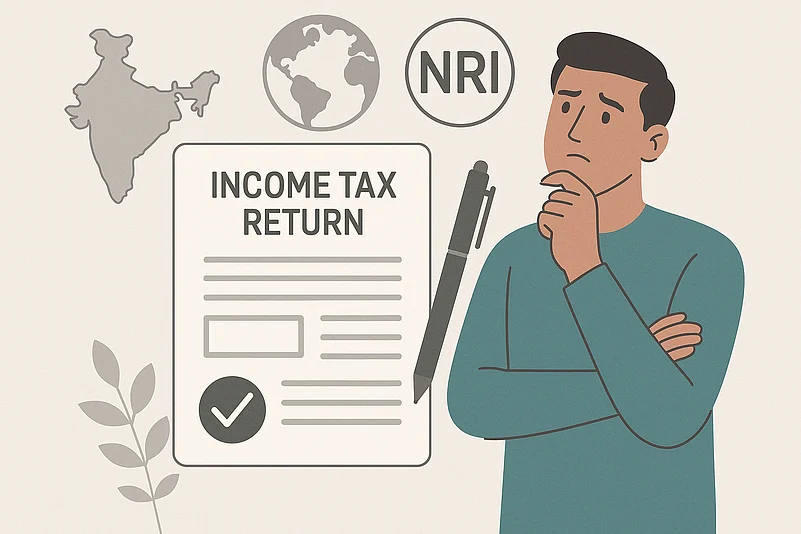If you're a non-resident Indian (NRI) earning income from India, this year's tax filing season brings a few changes you'll want to be clear about. To start with, the form you're required to use depends on how you earn your income. "If your income comes from rent, capital gains, salary paid in India, or interest on investments here, you need to file ITR-2. But if you're involved in any business or professional activity in India—say you're running a consultancy or own a share in a firm—you'll have to use ITR-3," says Deepak Kumar Jain, founder and CEO, TaxManager.in - the tax advisory and e-filing portal platform.
There's been a change to the deadline, too. NRIs now have until 15th September 2025 to file their returns, a small extension over the usual date. But be careful—not everything is delayed. Suppose you owe any self-assessment tax that still needs to be paid by 31st July. If you miss that, you'll start running up interest charges under the usual provisions.
Foreign Assets Still Must Be Declared
Now, on to disclosures. If you've filed ITR-2 before, you might remember having to report your Indian assets and liabilities under Schedule AL. That rule's been relaxed. From now on, you only need to fill that section if your gross income crosses Rs 1 crore in the financial year. The earlier limit was Rs 50 lakh, and it applied across the board, so this change comes as some relief.
However, foreign assets are a different story. If you have overseas property, bank accounts, or investments that add up to more than Rs 50 lakh, you're still required to declare them in Schedule FA—no matter how much (or little) you've earned in India. That requirement hasn't changed.
Capital Gains Now Split By Sale Date
Capital gains are another area where the rules have shifted. For this year's filing, you now need to separate your gains based on when the asset was sold. "While Filing ITR for FY 2024-25 – NRI is required to be ensure - Capital Gains reporting involves split by sale of date which means any Capital Asset sold before 23rd July 2024 should be taxed under old regime and any asset sold after 23rd July 2024 should be taxed under the new regime," says Jain.
If you're looking to claim relief under a Double Taxation Avoidance Agreement (DTAA)—which helps, make sure you're not taxed twice on the same income—you'll need to submit Form 10F along with a valid Tax Residency Certificate from your current country of residence. These aren't optional. Without them, Indian tax may be deducted at a higher default rate, even if the treaty says otherwise.
Other Things To Keep In Mind
A few other tweaks have been made, too. For example, if you're trying to claim a loss from a share buyback, that's now only allowed if you've also reported dividend income from those same shares. It's a move clearly aimed at tightening how such losses are treated.
Then there's tax deducted at source (TDS) reporting. Up to now, all that was needed was the Tax Deduction and Collection Account Number (TAN) and the amount deducted. But going forward, you'll also need to include the relevant section code, depending on whether the tax was cut on salary, interest, rent, or something else. It's a small detail, but it matters.
And finally, claiming deductions is no longer as simple as just listing the amounts. Now, you'll be asked for more specifics—like your insurance policy number, your permanent retirement account number (PRAN) if you're claiming national pension system (NPS) contributions, and your landlord's permanent account number (PAN) if you're taking a housing rent allowance (HRA) deduction. The goal is clearly to tighten compliance and reduce room for error.
In all, the new changes are mostly about better documentation, stricter cut-offs, and clearer tracking. It's a bit more paperwork, yes—but it also means fewer grey areas and a smoother filing process if you've kept your records in order. If you're unsure about any of this, it's worth getting a second look before you file.










